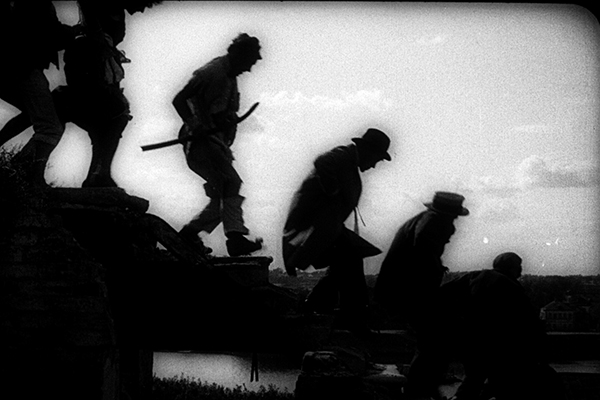Prolétariat
The right to Strike
PostED ON OCTOBER 17
Eisenstein's first film is revolutionary in every sense of the word.
"It is an angular film. Surprising. Bold. It contains the seeds of almost all the elements that, in a more mature form, appear in my works in the following years. It is a typical 'first' work, snarling and belligerent, as I was at that time." In his memoirs, Sergei Mikhailovich Eisenstein is right - Strike, shot when he was just 26 years old, contains all the virtues of a début work: constant invention, a frenetic pace, a continual desire to try out new narrative techniques.
There is no hero; the main character is the collective! A worker unjustly accused of theft is driven to suicide, leading the factory to go on strike. Faced with the proletariat, the potbellied bosses and their guards, informers or policemen, are in control. Even more than in Battleship Potemkin, the visual audacity of Strike is like a fireworks display with its flashbacks, superimpositions and symbolic juxtapositions - it's all there! Like when the informers are likened to different animals or, terrifyingly, when the reprisals against the strikers are compared to scenes from a slaughterhouse - a particularly striking "Koulechov effect"…
 La Grève, 1925
La Grève, 1925
© Gaumont Pathé Archives
The theoretician of cinéma-vérité (‘kino-pravda’), Dziga Vertov, would later criticise these "circus effects", but they still give the film an impressive density, a power that is still intact almost a century down the line. A formidable effect of reality is even created by the ultra-formalist approach; Eisenstein's project, "knocking down plot and story", blurs the line between fiction and documentary.
The final cut of Strike, in the autumn of 1924, was the subject of complex negotiations: Eisenstein and his operator Tissé had waited for Leon Trotsky's arrival to film in a factory south of Moscow. When it came to finishing the picture, Stalin had already launched an anti-Trotskyite campaign that made it impossible for the revolutionary to appear as planned in the film's epilogue. Eisenstein fought it, then gave in. The film nevertheless retains its singular splendour.
Screening :
La Grève by Sergueï M. Eisenstein (Stachka, 1925, 1h34)
Film-Concert Auditorium of Lyon Sun17 11am accompanied on the organ by Serge Liégeon.
A 2K print restored by Gaumont-Pathé Archives.

